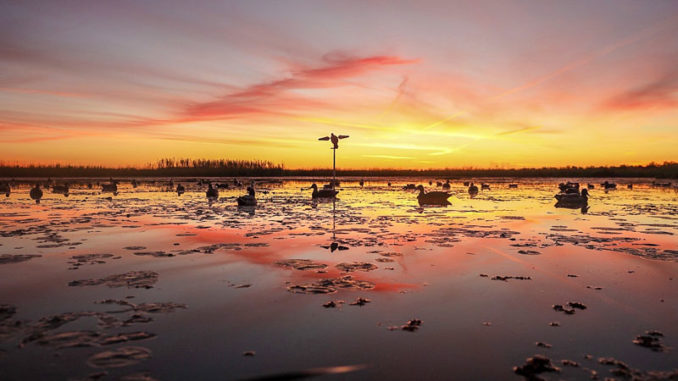
Adjust during the season, focus on realism
Lively discussions about decoy spread strategies have probably gone on since wood carvers starting crafting lifelike dekes in the 1800s.
Heck, Native Americans might have argued over what layouts worked best for the simplistic hand-crafted reeds they used as decoys before blackpowder weaponry was even invented.
Now, the J Hook, V Funnel and Double O are just a few of the online offerings available for best decoy spread options — but Larry Reynolds keeps things relatively simple for the start of duck season on his 150-acre lease in the marsh near Creole in Cameron Parish.
“I start out in my biggest pond with a pretty good spread of 70 decoys,” Reynolds said. “Typically, I start out with three dozen teal decoys, six hen mallard decoys to represent mottled duck pairs, then I’ll use a dozen or so pintail decoys out in the more open parts of the ponds.
“I’ll throw in another two dozen or so gadwall decoys in small groups.”
Tribute to a friend
Reynolds also always throws in two wigeon decoys as a tribute to his longtime hunting partner Joe Moore with the National Wetlands Research Center, who drowned in Wiley Pond near Caddo Lake in 1995.
Moore had purchased the decoys shortly before he died, and his wife passed them on to Reynolds.
“No matter where I go and no matter what I’m hunting, I hunt with a pair of Joe Moore’s wigeon decoys,” he said. “If I went to Alaska and hunted harlequin ducks, there would be a pair of wigeon decoys in my decoy spread.”
Downsizing
As the season progresses, Reynolds drastically downsizes his spread and seeks out smaller ponds on his lease as dabblers pair up and become less social.
“By the time the season ends, I’m hunting with typically a dozen decoys, and that will include a couple of hen mallard decoys, five teal decoys and couple of mallard decoys,” he said. “So the adjustments that I make on my little patch of ground are primarily based on the behavioral differences of the ducks.
“Build some irregularity into your spread to increase the realism. No matter what, you’re going to be more successful if you increase the realism.”


